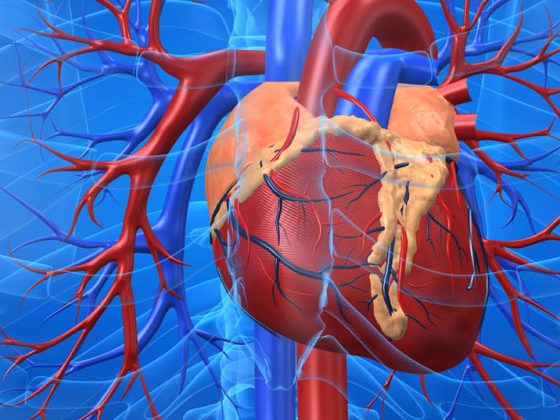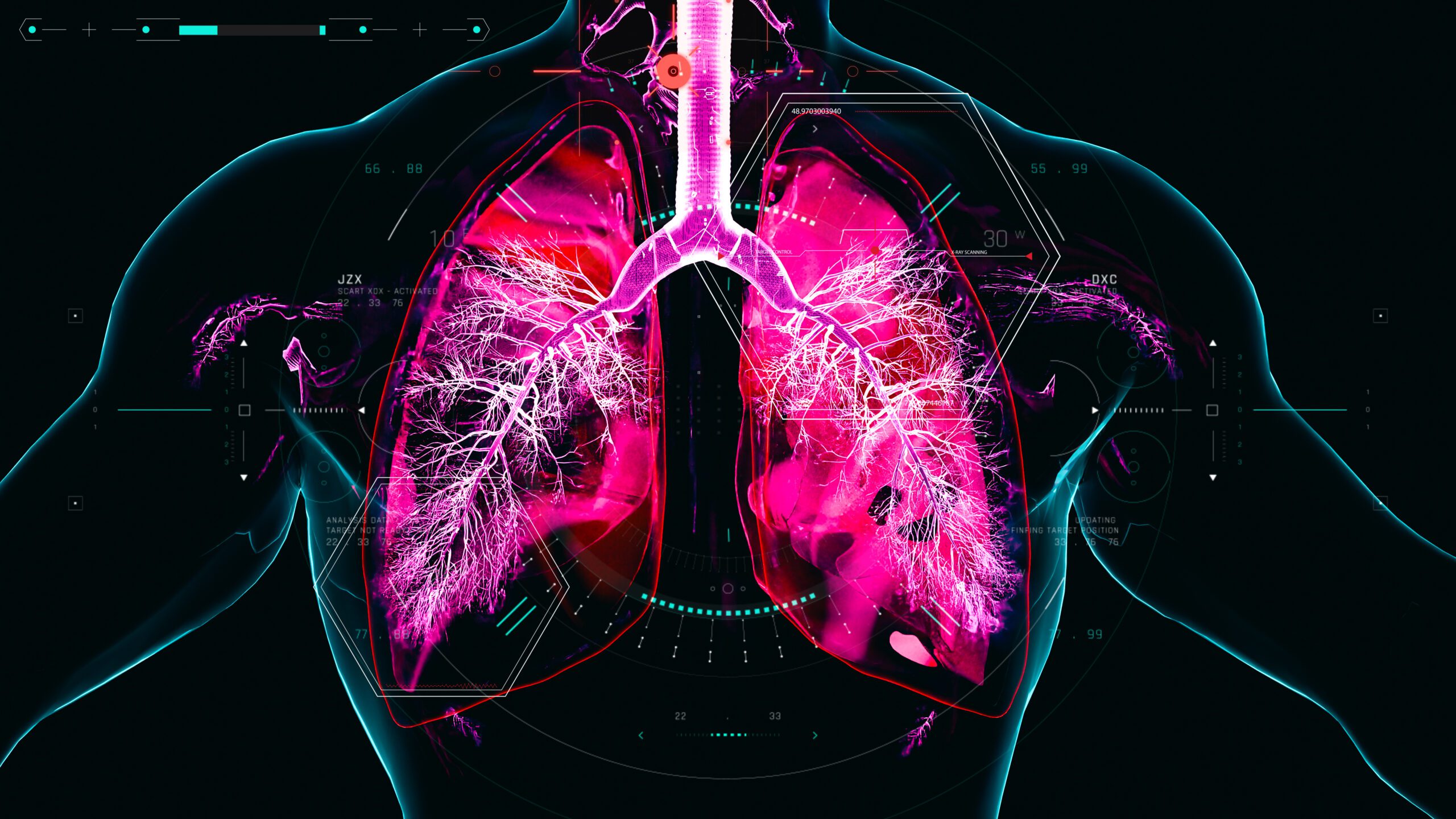Once again this year, numerous exciting events took place at the ESC Congress in London. As always, the hot-line sessions with cutting-edge and practice-relevant study results generated a lot of attention and discussion. At this point, some results should be highlighted.
Patients with ST-elevation myocardial infarction (STEMI) sustain some damage not only from the ischemia itself but also from the reopening of the artery. To date, specific therapies in this area are lacking. Does ciclosporin A help prevent damage from myocardial reperfusion or protect the myocardium during acute infarction?
In the phase III CIRCUS trial, the question was tested using data from 791 patients with acute STEMI (anterior) and complete occlusion of the affected artery. Participants received either a bolus injection of the drug at a dose of 2.5 mg/kg bw or placebo within 12 hours from symptom onset immediately before percutaneous coronary intervention (PCI).
Based on a small phase II trial that had shown that ciclosporin can reduce infarct size and reperfusion injury in acute myocardial infarction, positive results had actually been expected. Surprisingly, however, no clinical benefit was shown in CIRCUS. All-cause mortality, worsening of heart failure during initial hospitalization or readmission due to heart failure, and left ventricular remodeling (increase of ≥15% in left ventricular end-diastolic volume) within 1 year formed the combined primary end point. Data from 395 patients in the ciclosporin group and 396 in the placebo group were evaluable: the rate was 59% in the former arm and 58.1% in the latter (OR 1.04; 95% CI 0.78-1.39, n.s.). Other clinical parameters, such as the incidence of recurrent infarction, unstable angina, or stroke, also showed no improvement with ciclosporin administration, nor did the individual components of the primary end point.
Although the study yielded negative results, the authors emphasized that reperfusion injury should continue to receive attention in any case. Finally, despite the best possible medical care, one in four heart attack patients died within a year or subsequently suffered from severe heart failure. The study has also been published in the New England Journal of Medicine [1].
Mini pacemakers: what’s the status?
The LEADLESS II observational study included over 500 patients implanted with leadless VVIR pacemakers – in this case Nanostim™ – in the right ventricle. The results were presented at the congress and published in the New England Journal of Medicine [2]. This is the largest population of patients with such a system studied to date.
Despite major advances in pacemaker technology, approximately one in ten patients still experiences side effects and complications today. These are usually related to the electrodes or transvenous probes, the subcutaneous pacemaker pocket, or the pulse generator. Electrodes can break over time because they are subjected to multiple mechanical forces. Perforations and electrode or pocket infections are also possible. The advantages of the new system are thus obvious: it is implanted via the inguinal vein in a minimally invasive way using the smallest available introducer set for electrodeless systems (introducer catheter and an 18-F introducer sheath). The device is completely self-sustaining, measures just under 4 cm in length and has a diameter of approximately 6 mm.
After the mood at the beginning was therefore almost euphoric in view of the innovative technology, there have recently been more negative headlines about serious complications during implantation and deaths, which is why the manufacturer had stopped a post-market study (the system is already approved in Europe, but not yet in the USA at the time of the congress). In view of this starting position, the data now presented have been eagerly awaited.
Efficacy at 90%, safety at 93.3%
An initial cohort of 300 patients with implanted pacemakers was followed up for six months. The results from this group are already available, but the study has not yet been completed. A total of 526 patients participated in the study – implantation was successful in 504, or 95.8%. The primary efficacy endpoint (therapeutically acceptable pacing and sensing) was achieved by 270 of 300 patients, or 90%. Average pacing thresholds and sensing values at this time point were comparable to conventional transvenous electrodes, according to the authors. The primary safety endpoint, defined as freedom from serious device-associated adverse events, was met by 280 of 300, or 93.3%. Conversely, 6.7% of patients suffered a serious device-associated adverse event within six months:
- Cardiac perforation: 1.3%
- Dislocation of the device with subsequent necessary removal: 1.7%.
- Increased pacing thresholds that required removal of the old device and reimplantation: 1.3%.
- Vascular complications: 1.3%.
The rate of cardiac perforation, one of the more recently discussed complications, was 1.5% in the entire cohort, which was comparable to the rate with transvenous leads, according to the authors. Perforations are probably mainly related to the diameter of the device.
A direct comparison with conventional pacemakers is of course not possible due to the study design. However, since the trial met its efficacy and safety objectives and these have been approved by the FDA, the data from LEADLESS II should be considered positive. There were no device-associated deaths in the entire cohort, although there were two presumed procedure-associated deaths (0.4%). With increasing experience and targeted training of the physician performing the implantation, the side effect rates could improve significantly in the future, the researchers suspect.
Overall, the observation period is still short at six months and data on long-term effectiveness and safety are currently lacking. Seven patients in the overall cohort (excluding those with dislocation) required device removal within an average of 160 days, with no complications. The question remains open whether the retrievability is still given after a longer period of time (i.e. after more than one year), after all, the authors estimated the battery lifetime to be 15 years. In addition, questions remain about the target population. The device was used only in patients who required a single-chamber ventricular pacemaker. This group is a minority compared to the total pacemaker target group.
From PARADIGM to PARAMETER
After last year’s PARADIGM trial attracted much attention at the ESC Congress, results were now due from PARAMETER, a randomized trial of the efficacy of sacubitril/valsartan (LCZ696) in subjects with hypertension (systolic blood pressure ≥150 mmHg and pulse pressure amplitude greater than ≥60 mmHg) aged 68 years on average. After a wash-out period, the 454 patients received either valsartan/sacubitril at a dose of 400 mg/d or olmesartan 40 mg/d. The primary endpoint of the study was met:
- After twelve weeks, the reduction in central systolic aortic pressure was 12.6 (LCZ696) resp. 8.9 mmHg (olmesartan). This difference was significant (p=0.01).
- Central pulse pressure in the aorta was also significantly more significantly decreased with LCZ696 (6.4 vs. 4.0 mmHg, p=0.012).
- In contrast, there were no decisive differences in the side effect profile of the two substances.
- After 52 weeks, the significant difference in efficacy disappeared-this because add-on therapies had been approved and significantly more patients in the olmesartan group had taken additional antihypertensives from week 12. Specifically, 47% in the olmesartan arm and 32% in the LCZ696 arm needed add-on medications to effectively control their blood pressure.
LCZ696 also reduced 24-hour ambulatory blood pressure significantly more, mainly due to lower values at night. This is of great interest because nocturnal hypertension is an important cardiovascular risk factor. It remains to be seen how strongly the manufacturer will push the drug in the indication “hypertension”. In any case, the indirect evidence that LCZ696 acts against central blood vessel stiffening is significant. According to the authors, studies are planned that will again directly measure and demonstrate the effect of LCZ696 on arterial distensibility by MRI.
Was there anything else?
Finally, three more study results that generated discussion at the congress.
TECOS: In the SAVOR-TIMI-53 trial, there were significantly more admissions for heart failure with saxagliptin. In the TECOS study of 14 671 type 2 diabetic patients with cardiovascular disease, sitagliptin was not shown to be inferior to control in this regard. In the subgroup of approximately 2600 patients with preexisting heart failure, a hospitalization rate of 7.4 vs. 7.0% (control) was obtained over the three-year period. The authors conclude that sitagliptin can thus be safely used without fear of worsening heart failure or increasing risk.
AEGAN: To what extent can an adjunctive education program additionally improve adherence on apixaban? According to the AEGAN trial, which enrolled 1162 patients with nonvalvular atrial fibrillation, although additional brochures, reminders, and a “virtual clinic” did not significantly increase adherence (measured electronically by accessing the package), they did not improve adherence. However, adherence after six months was already very high without additional training and therefore there was little room for improvement. Specifically, the rates were 88.5% (control) vs. 88.3% (training). However, experts pointed out the need for a longer observation period, since patients would always follow a regimen more dutifully at the beginning of a therapy than later on.
SCOT: The SCOT trial, which was an EMA initiative, compared primary cardiovascular and secondary gastrointestinal risk of NSAIDs versus celecoxib in 7297 patients with osteoarthritis or rheumatoid arthritis (without underlying cardiovascular disease and mean age 69 years). In the main analysis over an average of about three years, there were no significant differences between the NSAID arm, where mainly diclofenac and ibuprofen were taken, and the celecoxib arm. The primary end point was cardiovascular death or hospitalization due to myocardial infarction or stroke. Event rates were approximately 1%. Secondary end point was death or hospitalization due to ulcer-related upper gastrointestinal bleeding. Again, there was no difference and very low case numbers. Similarly, rates of all-cause mortality did not differ. In the case of severe gastrointestinal events diagnosed by the physician, there was a significant advantage for celecoxib, but the number of cases was again very low (as in the entire study) – the surprisingly low event rates are also one of the points of criticism of the study. Overall, the authors assess the benefit-risk profile of the compounds as positive.
Source: European Society of Cardiology (ESC) Congress 2015, August 29-September 2, 2015, London.
Literature:
- Cung TT, et al: Cyclosporine before PCI in Patients with Acute Myocardial Infarction. N Engl J Med 2015; 373: 1021-1031.
- Reddy VY, et al: Percutaneous Implantation of an Entirely Intracardiac Leadless Pacemaker. August 30, 2015. DOI: 10.1056/NEJMoa1507192.
CARDIOVASC 2015; 14(5): 30-33












